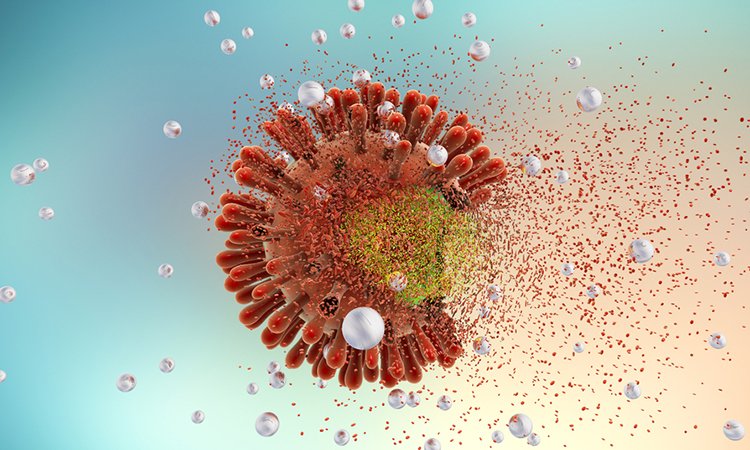Concanamycin A antibiotic that targets Nef protein could cure HIV
Posted: 11 September 2020 | Victoria Rees (Drug Target Review) | 1 comment
Researchers have revealed that the antibiotic concanamycin A targets a protein called Nef, allowing the immune system to destroy HIV in cells.


A team has discovered a potential way to kill HIV, by targeting a protein called Nef. The researchers screened thousands of compounds to reveal a lead drug molecule that targets this protein.
Previously, Dr Kathleen Collins, a professor of internal medicine and microbiology and immunology at the University of Michigan (U-M), US, discovered that HIV uses Nef to evade the body’s immune system by overriding the functioning of a protein on a cell’s surface that lets immune cells know that the cell is infected and in need of elimination. By disabling this protein, called MHC-I, infected cells are able to proliferate.
The current research aimed to determine if there was a US Food and Drug Administration (FDA)-approved drug or molecule already on the market that could override Nef, restore the functioning of MHC-I and allow the body’s own immune system, specifically cells known as cytotoxic T lymphocytes, to recognise the HIV-infected cells and destroy them.
“We started out screening a library of 200,000 small molecules and found none inhibited Nef,” said Dr Mark Painter, one of the researchers. They then approached Dr David Sherman, of the U-M Life Sciences Institute (LSI).
“Often synthetic molecules have quite a low molecular weight, meaning they are fairly small. And if you need to disrupt a large protein surface or interface, such as with Nef, a small molecule will not work well or at all,” explained Sherman. “A natural products library like the one at the LSI, on the other hand, is going to have molecules with a large range of weights and sizes.”
After screening approximately 30,000 molecules, they discovered that a class of antibiotic molecules called pleicomacrolides inhibited Nef.
“Pleicomacrolides are widely used in lab experiments when you want to shut down the lysosome. Because of this, they are considered toxic and risky to use as drugs,” said Painter.
However, the team determined that a pleicomacrolide called concanamycin A inhibits Nef at much lower concentrations than those needed to inhibit the lysosome. “As a lead compound for drug development, it is fairly exciting because we can use a very low dose and inhibit Nef without short-term toxicity to the cells,” said Painter.
In a proof-of-concept experiment, they treated HIV-infected, Nef expressing cells with concanamycin A and found that cytotoxic T cells were able to clear the infected T cells.
“More research will be needed to optimise the compound. We will need to further separate the potent Nef inhibitory activity from the more toxic effect on lysosomal function to make it a viable therapy,” said Collins.
The researchers are continuing work on refining the chemistry of concanamycin A to make it even more viable as a potential therapy. When combined with ART and future treatments that shock latent HIV awake, Painter noted the therapy could be used to clear any remaining virus, essentially curing HIV.
The results were published in PNAS.
Related topics
Drug Leads, Hit-to-Lead, Protein, Research & Development, Screening, Small Molecules, Therapeutics
Related conditions
HIV
Related organisations
University of Michigan (U-M)
Related people
Dr David Sherman, Dr Kathleen Collins, Dr Mark Painter



Good to know about conanamycin A wish to get them available for my use.